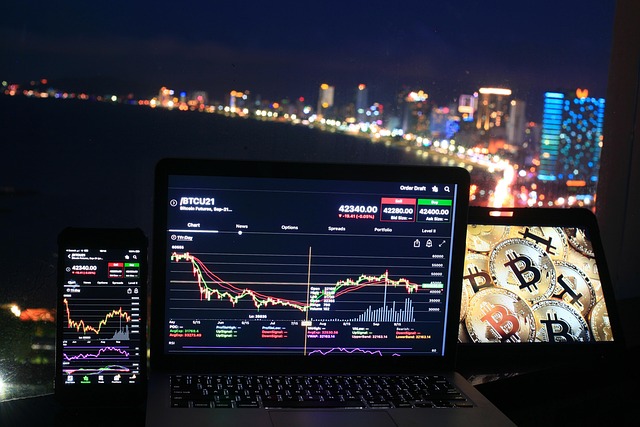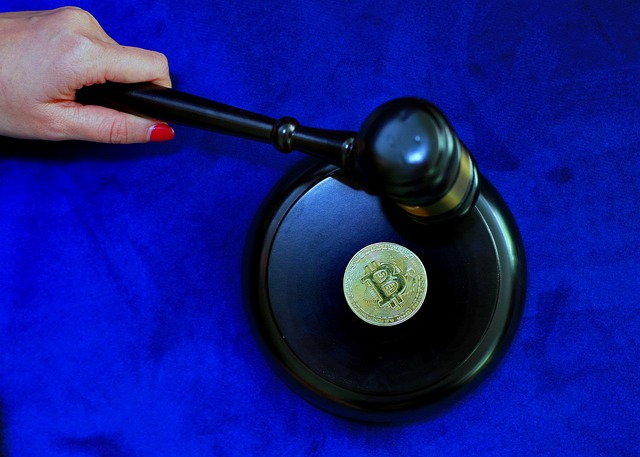How Major Crypto Market Makers Shape Liquidity and Trading
Author: Jameson Richman Expert
Published On: 2025-10-31
Prepared by Jameson Richman and our team of experts with over a decade of experience in cryptocurrency and digital asset analysis. Learn more about us.
The rise of major crypto market makers has transformed how digital-asset markets function — from tightening spreads on major exchanges to enabling large over-the-counter (OTC) trades. This article explains who the major crypto market makers are, how they operate, how traders and institutions interact with them, and practical steps to evaluate and use market-making services. Whether you’re an institutional trader, a retail pro, or a developer building liquidity tools, this guide provides actionable insights into crypto market making and links to essential resources and platforms.

What Is a Market Maker and Why Crypto Needs Them
Market makers are firms or entities that continuously provide buy and sell quotations for an asset, profiting from the spread while absorbing order flow and short-term risk. In traditional finance, market makers are critical to orderly markets. In crypto, their role is even more pronounced because cryptocurrency markets are fragmented across hundreds of exchanges with differing liquidity profiles and weaker native institutional infrastructure.
Major crypto market makers supply liquidity, reduce slippage, enable large trades via OTC desks, and facilitate market functioning during volatility. They power price discovery, support derivatives markets, and often partner with exchanges to run automated liquidity programs.
For general background on market makers see the Investopedia overview on market makers and the Wikipedia page on market makers. For context on the broader asset class, review the Wikipedia entry for cryptocurrency.
Who Are the Major Crypto Market Makers Today?
Major crypto market makers include proprietary trading firms, specialized liquidity providers, and global trading houses that have moved into digital assets. The list evolves quickly, but as of today some of the most prominent names are:
- Jump Trading / Jump Crypto — A high-frequency trading firm that expanded into crypto with significant capital, sophisticated execution systems, and market-making strategies across spot, derivatives, and on-chain venues.
- Cumberland (DRW) — A large OTC and market-making desk known for deep liquidity and institutional relationships across crypto exchanges and OTC networks.
- Wintermute — A leading dedicated crypto market maker offering spot and derivatives liquidity, exchange integrations, and automated liquidity products.
- GSR — Focused on institutional trading and liquidity, GSR provides OTC services, structured products, and market-making operations for tokens and derivatives.
- B2C2 — An experienced crypto liquidity provider and OTC market maker serving institutional counterparties globally.
- Flow Traders — An electronic liquidity provider with a strong presence in ETFs and equities that has grown into crypto-focused trading and market making.
- Jane Street — A traditional proprietary trading firm that has extended algorithmic trading expertise into crypto markets and ETF-linked crypto products.
- Susquehanna (SIG) and other quantitative trading firms — These quantitative market makers leverage options and derivatives expertise in crypto markets.
- QCP Capital — An Asia-focused desk offering OTC trading, tailored liquidity solutions, and research-driven trading strategies.
- Historical note — Alameda Research — Previously a major player, Alameda’s collapse underlines the importance of counterparty risk and transparency when dealing with market makers.
These firms differ in strategy, scale, geographies served, and the types of instruments they support (spot, perpetual swaps, options, or on-chain AMM integrations). Some are vertically integrated with other crypto services; others focus purely on algorithmic liquidity provision.
How Crypto Market Makers Operate: Technology, Risk, and Markets
Understanding how market makers operate helps traders know when and how to use their services.
1. Automated Liquidity Provision
Major firms deploy algorithmic systems to quote continuous bids and asks across exchanges. These algorithms dynamically adjust spreads and inventory based on volatility, order flow, and predicted short-term price moves.
2. Inventory and Hedging
Market makers hold inventory to provide liquidity. To manage directional risk, they hedge using other venues, derivative products (futures, perpetual swaps, options), or delta-hedging on different exchanges.
3. Cross-Exchange Arbitrage and Smart Order Routing
Because liquidity is fragmented, market makers often arbitrage price differences between venues or route large orders across multiple exchanges to minimize market impact.
4. OTC and Block Trading
For institutional-sized trades, OTC desks operated by market makers are crucial. These desks match large buyers and sellers, provide principal liquidity, and can settle trades off-exchange to avoid slippage and signaling risk.
5. On-Chain Liquidity and AMM Support
Some market makers also supply liquidity to decentralized exchanges (DEXes) and automated market makers (AMMs) or create algorithmic LP strategies that integrate with on-chain liquidity pools.
6. Risk Management and Collateral
Market makers use leverage prudently, maintain collateral buffers, and employ risk controls to manage funding and counterparty exposures. Historical incidents (exchange outages, extreme volatility) show why strong risk systems are essential.

Why Major Crypto Market Makers Matter to Traders and Projects
- Lower spreads: Tighter bid-ask spreads reduce trading costs for both retail and institutional traders.
- Improved execution: More consistent liquidity means smaller market impact for larger orders.
- Reliable price discovery: With liquidity across venues, market makers help build reliable reference prices for index and derivative products.
- Listing support: New token projects often partner with market makers to ensure orderly trading upon listing.
- Access to capital: OTC desks provide a way for projects and institutions to execute large trades without swamping order books.
How Traders and Projects Interact with Market Makers (Practical Steps)
Whether you’re an institutional trader needing to execute a block trade or a token issuer preparing for a listing, follow these steps to engage market makers effectively.
- Define your objectives: Is your priority price, speed, or anonymity? OTC desk trades emphasize anonymity and minimal slippage, while exchange integration focuses on continuous liquidity.
- Perform due diligence: Check the market maker’s track record, regulatory footprint, counterparties, custody and settlement setup, and disaster recovery practices.
- Request quotes and compare spreads: Get live quotes from multiple desks or liquidity providers for the same size and instrument. Consider the total cost including fees and funding.
- Agree on settlement and KYC terms: OTC and institutional services will require KYC and may have specific settlement timelines and custody instructions.
- Use staged execution for large orders: Break large trades into tranches, use pegged orders, or arrange bilateral block trades to minimize market impact.
- Monitor execution and reconcile: Post-trade, verify settlement details, confirm accounting, and review execution quality to refine future interactions.
Checklist: How to Evaluate a Market Maker
- Reputation and longevity: Years in business and recognized exchange partnerships are positives.
- Capital strength: Sufficient balance sheet to support large trades and survive drawdowns.
- Technology stack: Low-latency connectivity, risk controls, and cross-venue routing capabilities.
- Regulatory compliance: Know-your-customer (KYC) and anti-money-laundering (AML) policies, and any licenses held.
- Transparency: Clear pricing models, fees, and settlement practices.
- Customer support and SLAs: Dedicated relationship managers and defined service levels for institutional clients.

Regulatory and Ethical Considerations
Market-making activity sits at the intersection of liquidity provision and market integrity. Regulators expect firms to avoid manipulative practices such as spoofing, layering, or front-running. Depending on jurisdiction, market makers may be subject to securities, commodities, or financial services regulation.
Key considerations:
- Maintain robust trade surveillance and audit trails.
- Clearly separate proprietary trading from any advisory services to avoid conflicts.
- Comply with local licensing and reporting obligations (for example, in the U.S. the CFTC and SEC have frameworks that affect different token types).
- Work with reputable custodians for settlement and asset safekeeping.
Case Example: Executing a Large Sell Without Moving the Market
Scenario: An institution needs to sell 10,000 ETH (~block size dependent on market). Doing that directly on an exchange would cause slippage and cascade sells.
Recommended execution:
- Contact an OTC desk from a reputable market maker and request a block quote for 10,000 ETH.
- Negotiate price and settlement terms; consider staged settlement to reduce counterparty credit risk.
- Execute the trade off-exchange via the market maker, who will absorb inventory risk or hedge across venues.
- Settle on agreed rails (custodial transfer, on-chain settlement, or exchange internal transfer) and reconcile.
This approach limits on-exchange slippage and signaling, while relying on the market maker’s capital and hedging capabilities.
Tools and Strategies Market Makers Use — and How Traders Can Leverage Them
Market makers rely on algorithmic trading, smart order routers, hedging engines, and increasingly AI and machine learning. Traders can leverage similar tools to improve execution quality:
- Smart order routing (SOR) to access liquidity across multiple venues in real time.
- Execution algorithms (TWAP, VWAP, POV) to split large orders and minimize market impact.
- AI-driven strategies for market-making and market-taking — see a practical guide to building AI trading bots for step-by-step implementation in crypto.
- Strategy guides and education — download free strategy PDFs and study proven techniques for risk-adjusted trading.
Useful resources:
- How to set up an AI trading bot — practical step-by-step guide
- Crypto trading strategies — free PDF download guide
- Can MetaTrader 4 trade bitcoins? — in-depth analysis
- Ethereum live prices and smart trading strategies

On-Chain Market Making vs Centralized Market Making
On-chain market making (liquidity providers in AMMs and DEXs) differs from centralized exchange market making mainly in custody, settlement, and mechanism:
- Custody: On-chain LPs hold tokens in smart contracts; centralized market makers custody assets off-chain with exchanges or custodians.
- Fees and impermanent loss: On-chain LPs earn protocol fees but face impermanent loss; centralized market makers manage inventory and hedging to avoid such risk.
- Transparency: On-chain positions are public on-chain (but pseudonymous); centralized desks require KYC yet can operate with private liquidity pools.
How Smaller Traders Can Benefit from Market Makers
Retail and smaller institutional traders benefit indirectly and directly from market makers:
- Tighter spreads: Lower costs for market orders and limit orders executed against improved liquidity.
- Better depth: Deeper order books for major tokens reduce slippage for medium-sized trades.
- OTC access: For ambitious traders, OTC services may be available at scale — but expect KYC and relationship requirements.
Best Practices for Trading When Liquidity Changes
- During high volatility, widen your limit order tolerances or use market orders cautiously.
- Check liquidity depth across multiple exchanges; use smart order routers or split execution across venues.
- Monitor funding rates on perpetual contracts — market makers often balance inventories using these instruments.
- Keep emergency withdrawal and contingency plans if exchange connectivity fails.

Where to Trade and Connect with Liquidity — Recommended Platforms
Below are established exchanges where major market makers often provide deep liquidity. If you’re creating an account, use the referral links provided (links open exchanges in new tabs):
- Binance — global crypto exchange (referral)
- MEXC — spot & derivatives exchange (referral)
- Bitget — derivatives-first exchange (referral)
- Bybit — derivatives & spot trading (referral)
Each exchange has differing liquidity profiles for certain tokens and pairs. Major market makers typically operate across multiple venues simultaneously — compare order book depth and spread across these exchanges before executing large trades.
Impact of Market Makers on Token Listings and Projects
Token projects often engage market makers for listing support. Services include:
- Providing initial liquidity to stabilize prices post-listing.
- Running arbitrage and hedging to maintain peg on stablecoins or wrapped assets.
- Advising on exchange relationships and market design to minimize volatility on launch.
Projects should partner with reputable firms, negotiate clear terms about inventory, termination clauses, and reporting expectations, and ensure transparency with investors regarding any market-making arrangements to avoid perceptions of price manipulation.
Common Misconceptions About Market Makers
- “Market makers push prices to profit.” — Market makers earn via spread and risk management. While abuses occur, legitimate firms seek fair fills to avoid reputational and regulatory damage.
- “All liquidity is equal.”strong> — Liquidity quality varies: consider depth, response times, and whether the liquidity is sustainable or artificially propped up.
- “Market makers are always on your side.” — They are counterparties and aim to manage risk and profit — understand fee structures and execution terms.

Trends and the Future of Crypto Market Making
Key trends shaping the next wave of market making:
- Algorithmic sophistication: Greater use of machine learning to predict short-term flows and optimize pricing.
- On-chain market making: New tools for automated LP strategies and decentralized market-making protocols.
- Regulatory clarity: As regulators define rules around tokens and intermediaries, market makers will adapt their compliance frameworks, impacting service availability in certain jurisdictions.
- Integration with custodians and institutional rails: Tighter interoperability with regulated custody, prime brokers, and settlement systems will expand institutional adoption.
Learning and Tools — Where to Start
If you want to deploy strategies similar to market makers, or just improve execution, start with these practical resources:
- Strategy templates and educational PDFs: Free crypto trading strategies PDF
- Step-by-step AI bot setup: How to set up an AI trading bot
- Platform compatibility and tools: Can MetaTrader 4 trade bitcoins?
- Real-time market data for major assets: Ethereum live prices and strategies
Practical Example: Integrating a Market Maker for a Token Launch
Step-by-step plan for a token issuer:
- Define liquidity goals and duration of market-making support (e.g., first 30–90 days).
- Solicit proposals from multiple market makers, comparing spreads, minimum capital requirements, and performance metrics.
- Negotiate clear KPIs (e.g., minimum quoted size, maximum spread, daily uptime).
- Ensure legal and compliance review of agreements, including termination rights and confidential information safeguards.
- Coordinate listing timing with exchange partners and announce market-making support to the community to reduce FUD.
- Monitor execution, and maintain transparency with investors regarding the arrangement’s nature and duration.

Risks to Watch and How to Mitigate Them
- Counterparty risk: Use reputable market makers and prefer those with custodial separation or regulated entities.
- Operational risk: Confirm SLAs, redundancy, and disaster recovery practices.
- Market manipulation allegations: Maintain documentation of trades and policies to defend against regulatory scrutiny.
- Liquidity withdrawal: Have contingency plans if a market maker exits — staggered exit clauses and backup providers help.
Conclusion
Major crypto market makers are indispensable to a mature digital-asset ecosystem. They provide liquidity, improve price discovery, and enable large trades that would otherwise disrupt markets. However, traders and projects must evaluate market makers carefully — considering reputation, capital, technology, and compliance — and use best execution practices to minimize risk.
For those building trading systems or preparing token launches, leverage available educational resources and guides to sharpen your execution strategy. Start with a thorough market-maker due diligence checklist and consider engaging multiple providers to diversify counterparty risk.
Further reading and resources: Explore the linked strategy guide and AI bot setup instructions for hands-on steps to improve execution and experiment with algorithmic trading:
- Crypto trading strategies PDF
- AI trading bot how-to
- MetaTrader 4 and Bitcoin analysis
- Ethereum live prices & strategies
Disclaimer: This article is for educational and informational purposes only and does not constitute financial, legal, or tax advice. Always perform your own due diligence and consult qualified professionals before making significant financial decisions.